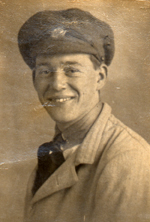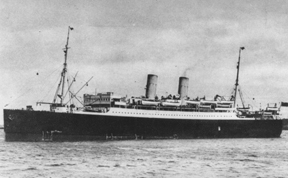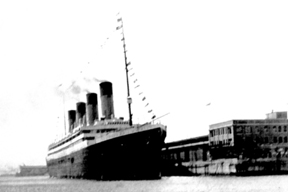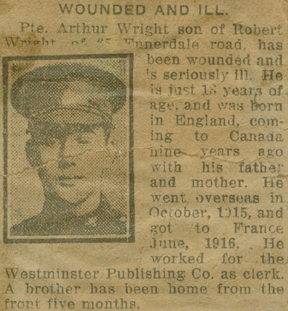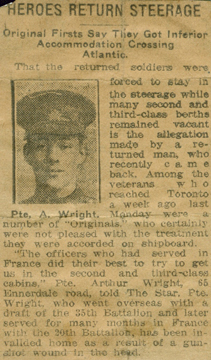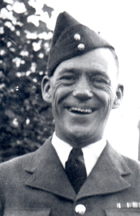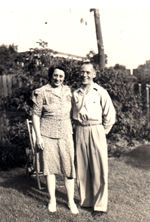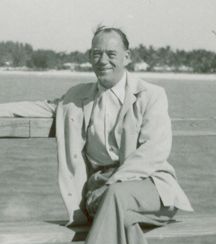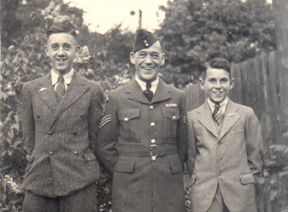Wall of Service
Column
7
Row
24
Arthur Wright was born in London, England on May 19, 1898 the son of Robert Wright and Elizabeth Wright (nee Harfield). Arthur had two older brothers, Christopher Robert born Dec 8, 1884 and Albert born circa 1886. The family migrated to Canada around 1907 settling in Toronto. At age 17 Art lived with his parents at 65 Ennerdale Rd Toronto and worked for Westminister Publishing Co. Arthur lied about his age (added a year to his true age) and enlisted in the 12th York Rangers and was transferred to the Canadian Overseas Expeditionary Force with the 35th battalion in the First World War at the age of 17 on Aug 18, 1915. In basic training he established himself as an excellent marksman with an army rifle. He was sent overseas from Montreal on S.S. Metagama to England arriving on Oct 25, 1915. While stationed in England his diary mentions the zeppelin raids he saw. He spent many months learning how to shoot, use a bayonet, wear a gas mask and attend the never ending route marches and trench digging. He was transferred to 20th Canadian Battalion on June 28, 1916 and then shipped to France on June 29th 1916 landing at Le Havre, France as a member of the 20th Canadian Infantry Battalion. In France Art served at Ypres, Somme and Vimy Ridge. At Ypres from early August 1916 to September 1916 he served as a scout, observer and was attached to Canadian Army Medical Corps for a short period. His diary mentions several "gas" attacks by the Germans and the constant artillery bombardment with exploding shells landing too close for comfort. With the Medical Corps he would crawl out at night and bring back wounded allied soldiers from no-man's land. He also acted as a scout (a soldier that at night would worm his way across the no-man's land between the lines) and attempt to draw the positions, on a map, of the German lines and heavy guns. The scouts also dug tunnels towards the German lines. Arthur was a slight thin young man (weighed 117 lbs & 5 ft 6 inches tall when he enlisted) and ideally suited for the job. Arthur also spent considerable time while still at Ypres in a dug-out, out-post in front of the lines as an observer as to what troop activity was being done in the German lines. One notation in his diary tells of a German soldier in his own dug-out, out-post with a mirror on a stick observing the allies lines a short distance away. Several notations from his diary mention the cold, wet, stinking smell of the trenches and the depth of the water at times that covered the trench dirt floor. The following poem in Art's handwriting in his 1916 diary describes the living conditions in the trenches.
"My Dug-Out"
What is this slimy hole
Where oft I'm lurking like a mole
And cursing Germans heart and soul
My dug-out
Where is it that beneath the floor
The waters rising more and more
And where the roofs a broken door
My dug-out
Where is it that I try to sleep
Betwixt alarms, when up I leap
And dash through water four feet deep
My dug-out
Where is it that I'll catch a chill
And loose my only quinine pill
And probably remain until
I'm dug-out
My dug-out
Several entries in his diary mention shells exploding very close and in several cases close enough that his trench or dug-out collapsed around him half burying him in mud. One entry in his diary notes that "his out-post, dug-out" that he used the night before had received a direct hit by a shell and was gone. One of his out-posts was up a tree and from there he could observe the German lines and he wrote that he saw horses, carts and men moving around. The lines of trenches at some locations were only 60 ft apart. The 20th battalion was then sent to the Somme and he served there for three weeks in the trenches leaving in late October, 1916. The weather was terrible with snow, rain and sleet falling and everything covered in mud. It was in this time frame that the Ross rifle they had, was exchanged for the Lee Enfield. Another entry in his diary states that he sold a German bayonet for 15 francs and a German helmet for 20 francs with the proceeds of both sales used to purchase food. Entries in his pay records show that he was paid one dollar a day and an extra ten cents a day when in the trenches. He called the Germans "Fritz" and referred to England as "Old Blightie", all from notations in his diary. He mentions that on January 27, 1917 his unit marched 5 miles for a bath and a change of clothes and then back 5 miles. The 20th battalion for the next few months was moved to several other fronts during the winter of 1916-1917 and eventually was sent to Vimy Ridge in February 1917 in preparation for a Canadian attack on the German lines. The British and French forces had previously lost thousands of men in unsuccessful attempts to capture Vimy Ridge. While preparing for the big attack at Vimy Ridge, Art was part of a work detail building bridges over the trenches, which were half filled with water, and was seriously wounded by a gun shot wound in the head on March 21st 1917. He was hospitalized at Camiers, France and was operated on March 27, 1917, and a steel plate was put in his skull to replace the shattered bone. He was critically ill for about three weeks and during that period a brief notation in his diary on April 9th says "We're over the top", referring to his own Battalion, the 20th, and a few days later another entry says "We're winning", both entries refer to the decisive victory of the Canadian Forces at Vimy Ridge that started on April 9th 1917. He was shipped back to England from France on April 20, 1917. He convalesced in England in Hospitals at Birmingham and Epsom. He suffered from headaches, dizziness and perforated ear drums and was discharged from hospital on Dec 21, 1917. He was eventually sent back to Canada on the S.S. Olympic and arrived in Halifax on March 20, 1918 and honorably discharged on April 24, 1918. His army identification number was # 405793 and he was awarded two service medals, the British War Medal and the Victory Medal. He was awarded a Good Conduct Badge on March 1, 1918. He received a very small pension for the rest of his life for his head wound. The head wound did not affect his ability to live a normal life.
When he returned to civilian life he entered the investment business in Toronto and for about 10 years in total worked for Watt & Watt and then Moss Lawson, both Brokerage Houses. In 1926 he married Ethel Alice Mary, Toronto, daughter of Frederick Franklin and Isabella Jane in Toronto. They bought a brand new house on Millwood Rd. in North Toronto. In 1927 they had a son Douglas and in 1929 they had another son Leonard. In the early 1930's and up to 1939 times were tough with Art losing his job because of the depression and for years, only had part time jobs at various locations.
World War Two
When the Second World War started Art enlisted in the Royal Canadian Air Force on June 13, 1940 and was assigned to the payroll dept. He was posted to St Thomas, Montreal, Quebec City, Rockliffe, Trenton and Toronto while in Canada. When the RCAF had a good number of airmen overseas Art was sent to England on June 30, 1943 at the rank of Flight Sergeant arriving there on July 7, 1943 and was attached to the payroll section to pay Canadian Airmen from the R.C.A.F. United Kingdom Base Accounting Unit and later at the Base at Ludford. Art remained in England for about two years & two months and left England when the war was over on August 28, 1945 and arrived in Canada September 5, 1945. He rejoined his wife and sons on Millwood Rd Toronto and about 6 months later he was honorably discharged on March 18, 1946. His Air Force identification number was # R 65891 and he was awarded three service medals, the Defence Medal, the Canadian Volunteer Service Medal and the Clasp to CVSM, and the War Medal 1939-45. His Character assessment was graded Very Good and his Trade Assessment graded Superior. He applied and got a job in 1946 with the Federal Government in Toronto as an accounting clerk. In 1950 his eldest son Douglas married Isabel and they had 4 children, Stephen, Nancy, Gordon and Brenda. In 1954 his other son Leonard married Frances and they had 2 children, Brian and Gregory. Over the years Art enjoyed being a grandfather and enjoyed the company of his growing family and was proud of them all. Art worked for the Federal Government until June 1964 when he retired at the age of 66. He and his wife then took a long anticipated trip to England and they visited some of his childhood haunts. When they returned from their holiday in England Art became ill and was diagnosed as having lung cancer. His cancer was probably a secondary cancer to the prostate cancer that he had about 6 years earlier. Art died peacefully in his bed with his wife and eldest son Doug at his bedside on Dec 14, 1964 at the age of 66 in the home they purchased as a young married couple.
Art very seldom talked about his war service but was very proud of the fact that he was at Vimy Ridge and was part of the lead up to the Canadian decisive Victory at Vimy Ridge. Historians have determined that the Canadian Victory at Vimy Ridge was one of the determining factors that made Canada a nation and also a significant turning point in the war. His wife Ethel died on Feb 1, 1975 at age 76. Both are buried in the family plot in Mount Pleasant Cemetery, Toronto.
His descendants continue to grow after his death with Nancy marrying David and they had three children, Erin, Robert, and Kelly. Gordon married Hellen and they had two boys, Jason and Jeffrey. Brenda married Jeffrey. Stephen never married. Gordon divorced Hellen and married Natalie who had a son from a previous marriage, Daniel. Brian married Debra and they had two boys Michael and Justin. Gregory married Karen and they had two children, Laura and Mitchell. Art's two sons, Doug now 76, and Len now 74 are both retired. Both are alive and well in June, 2003.
Wall of Service
This plaque /brick is a very small tribute to a grandfather, father and husband who volunteered and enlisted in two world wars, was wounded in the trenches and served his country to the best of his ability. Art's (Dad's) service medals are proudly displayed in a display case as a tribute to him. Information and confirmation on Art's war service in both world wars was obtained from records at National Archives of Canada and contents of old diaries from the First World War. This article written and plaque/brick purchased by his eldest son Doug in June, 2003.
